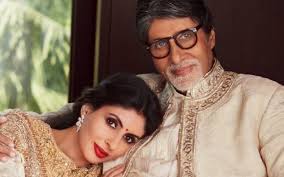Feature
Nita Ambani,Arundhati Bhattacharya in Forbes Asian women power list

 Mumbai:Reliance Industries director Nita Ambani and State Bank of India chairman Arundhati Bhattacharya have been ranked top two in Forbes’ “Asia 50 Power Businesswomen 2016” list, which acknowledges the inroads women are making in the business world, despite gender inequalities.
Mumbai:Reliance Industries director Nita Ambani and State Bank of India chairman Arundhati Bhattacharya have been ranked top two in Forbes’ “Asia 50 Power Businesswomen 2016” list, which acknowledges the inroads women are making in the business world, despite gender inequalities.
Including Ambani and Bhattacharya, eight Indian businesswomen have made the cut in the latest list who among them bring to the table representations from diverse business fields — banking, bio-tech, data analytics, textiles, pharma and even wellness and beauty.
“In a country where billionaire wives tend to remain in the shadow of their husbands, Nita’s rising profile in the Reliance empire is unusual and earns her a debut spot on our Power Businesswomen ranking this year,” said Forbes, which also ran a separate story on her.
Incidentally, a Reliance Group entity is a licensee for publishing Forbes India.
“As Reliance’s non-executive director, Nita has no formal operational role in the conglomerate that her husband runs as chairman and managing director. But it’s no secret that ‘Bhabhi’ — Hindi for brother;s wife — as she is called by insiders, is a power near the throne.”
Mukesh Ambani, her husband, is the group chairman.
Among her achievements, the magazine said an an accidental entry into sports made her the face of her group after Reliance spent $112 million for a cricket team, snatching such icons as Sachin Tendulkar. Mumbai Indians, as he team is called, went on to win two titles after her induction.
On the flip side, the magazine said the Ambanis have been criticised for not having personally been givers, commensurate with Mukesh’s $22-billion wealth, and for moving into Antilla, a 27-storey sky palace in south Mumbai, billed as the world’s most expensive home for its $1 billion tag.
Here’s what Forbes said on other Indian women on the list:
Bhattacharya: She facing her most challenging test yet with the State Bank of India, the country’s biggest. Mounting bad loans, which stood at $11 billion in December, caused net profit to plunge more than 60 percent to 190 million in a recent quarter.
“The days of promoters gaming the banking system are over,” she warned in February, before urging the arrest of liquor baron Vijay Mallya, whose defunct Kingfisher Airlines owes more than $1.3 billion to state-run banks.
Ambiga Dhiraj, chief executive, Mu Sigma: In February Dhiraj became the first female boss of an Indian-owned tech unicorn when she took over Mu Sigma, a provider of data-analytics services, from husband Dhiraj Rajaram, who founded the firm in 2004. With estimated revenue of $250 million, it is valued at $1.5 billion, based on its latest funding round.
Dipali Goenka, chief executive, Welspun India: Five years ago, when Goenka took charge of home textiles maker Welspun India, the buzz in the male-dominated industry, she recalls, was: “Welspun has lost its mind.” Goenka has doubled down to disprove that.
Vinita Gupta, chief executive, Lupin: Gupta runs India’s third-largest pharmaceutical company, with $2 billion in revenue. In the past year she has spearheaded $1.2 billion in acquisitions, the biggest of which was the $880 million purchase of Gavis Pharma, giving Lupin its first manufacturing facility in the US.
Chanda Kochhar, managing director, ICICI Bank: As boss of the country’s largest private-sector lender, Kochhar has to contend with the current bane of India’s banking system: Bad loans. In a bid to retain female staff, she launched “iWork@home”, which allows employees to work from home for a year. Executives can also take children under the age of 3 on business trips, with a caregiver, at the bank’s expense.
Vandana Luthra, vice chair, VLCC Health Care: Luthra pioneered the concept of a beauty and wellness chain in India. She opened her centre in New Delhi in 1989, offering weight management as well as hair and skin treatments, and now has 313 centres in 11 countries in Asia, the Middle East and East Africa.
Kiran Mazumdar-Shaw, chair, Biocon: Amid a volatile stock market, the founder of Biocon took its thriving research arm, Syngene International, public last August. With a recent market cap of $1.1 billion Syngene shares are up more than 52 percent. The self-made Mazumdar-Shaw has positioned Biocon as a large player in insulin. Biocon is the only Asian firm ranked among the top 20 biotech employers worldwide by Science magazine.
Entertainment
Meghalaya Reserves Legalized Gambling and Sports Betting for Tourists

The State Scores Extra High on Gaming-Friendly Industry Index
Meghalaya scored 92.85 out of 100 possible points in a Gaming Industry Index and proved to be India’s most gaming-friendly state following its recent profound legislation changes over the field allowing land-based and online gaming, including games of chance, under a licensing regime.
The index by the UK India Business Council (UKIBC) uses a scale of 0 to 100 to measure the level of legalisation on gambling and betting achieved by a state based on the scores over a set of seven different games – lottery, horse racing, betting on sports, poker, rummy, casino and fantasy sports
Starting from February last year, Meghalaya became the third state in India’s northeast to legalise gambling and betting after Sikkim and Nagaland. After consultations with the UKIBC, the state proceeded with the adoption of the Meghalaya Regulation of Gaming Act, 2021 and the nullification of the Meghalaya Prevention of Gambling Act, 1970. Subsequently in December, the Meghalaya Regulation of Gaming Rules, 2021 were notified and came into force.
All for the Tourists
The move to legalise and license various forms of offline and online betting and gambling in Meghalaya is aimed at boosting tourism and creating jobs, and altogether raising taxation revenues for the northeastern state. At the same time, the opportunities to bet and gamble legally will be reserved only for tourists and visitors.
“We came out with a Gaming Act and subsequently framed the Regulation of Gaming Rules, 2021. The government will accordingly issue licenses to operate games of skill and chance, both online and offline,” said James P. K. Sangma, Meghalaya State Law and Taxation Minister speaking in the capital city of Shillong. “But the legalized gambling and gaming will only be for tourists and not residents of Meghalaya,” he continued.
To be allowed to play, tourists and people visiting the state for work or business purposes will have to prove their non-resident status by presenting appropriate documents, in a process similar to a bank KYC (Know Your Customer) procedure.
Meghalaya Reaches Out to a Vast Market
With 140 millions of people in India estimated to bet regularly on sports, and a total of 370 million desi bettors around prominent sporting events, as per data from one of the latest reports by Esse N Videri, Meghalaya is set to reach out and take a piece of a vast market.
Estimates on the financial value of India’s sports betting market, combined across all types of offline channels and online sports and cricket predictions and betting platforms, speak about amounts between $130 and $150 billion (roughly between ₹9.7 and ₹11.5 lakh crore).
Andhra Pradesh, Telangana and Delhi are shown to deliver the highest number of bettors and Meghalaya can count on substantial tourists flow from their betting circles. The sports betting communities of Karnataka, Maharashtra, Uttar Pradesh and Haryana are also not to be underestimated.
Among the sports, cricket is most popular, registering 68 percent of the total bet count analyzed by Esse N Videri. Football takes second position with 11 percent of the bets, followed by betting on FIFA at 7 percent and on eCricket at 5 percent. The last position in the Top 5 of popular sports for betting in India is taken by tennis with 3 percent of the bet count.
Local Citizens will Still have Their Teer Betting
Meghalaya residents will still be permitted to participate in teer betting over arrow-shooting results. Teer is a traditional method of gambling, somewhat similar to a lottery draw, and held under the rules of the Meghalaya Regulation of the Game of Arrow Shooting and the Sale of Teer Tickets Act, 2018.
Teer includes bettors wagering on the number of arrows that reach the target which is placed about 50 meters away from a team of 20 archers positioned in a semicircle.
The archers shoot volleys of arrows at the target for ten minutes, and players place their bets choosing a number between 0 and 99 trying to guess the last two digits of the number of arrows that successfully pierce the target.
If, for example, the number of hits is 256, anyone who has bet on 56 wins an amount eight times bigger than their wager.























